Many plants can help repel ants in your garden. Each of these plants has a different scent that ants find offensive, making them less likely to explore or nest near them. If you’re looking to add some plant life to your garden that can help repel ants, try adding some of these plants. Not only will they keep the pesky insects at bay, but they’ll also add a touch of greenery to your outdoor space.
12 plants that repel ants to include in your garden
Rosemary
Rosemary is a perennial herb with aromatic leaves and small, purple flowers. Ants find Rosemary unpalatable and will generally steer clear of it, making it an excellent plant to include in your garden if you want to discourage ants. Rosemary also helps improve air quality and has anti-inflammatory properties.
In case you missed it: How to Grow Rosemary from Seed to Harvest: Check How this Guide Helps Beginners
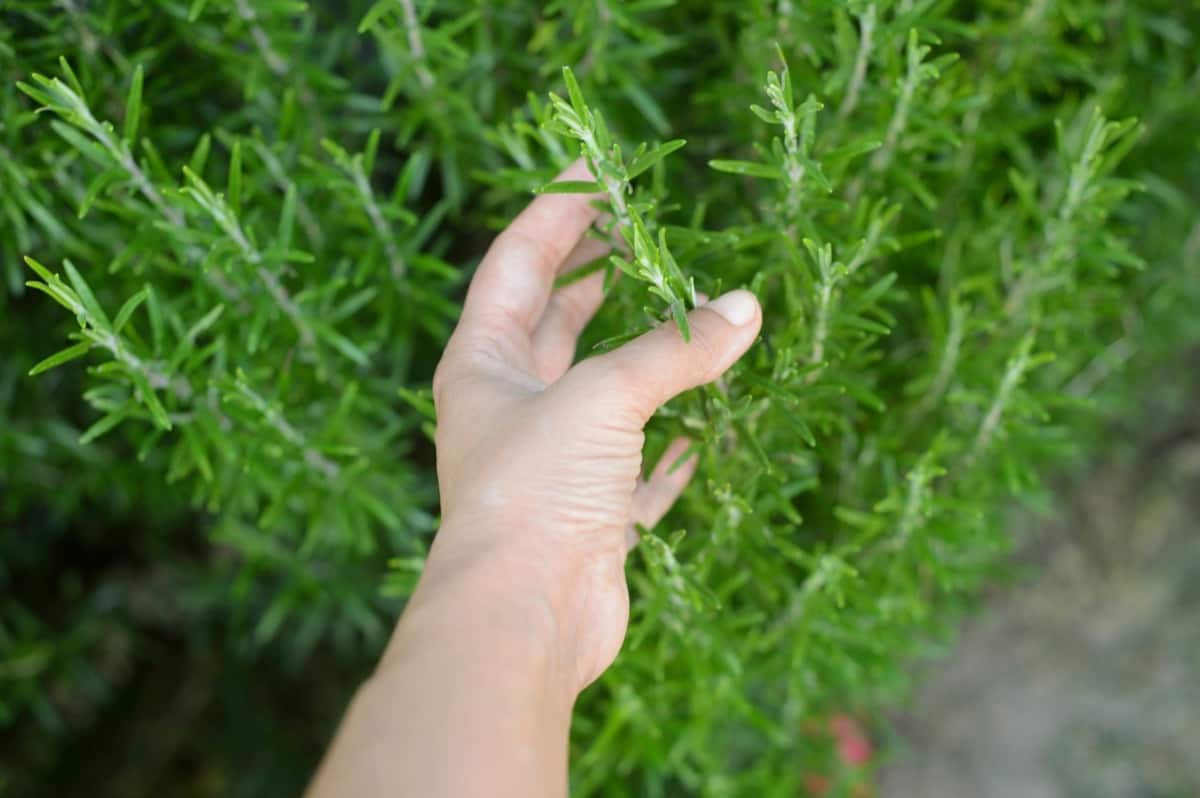
In addition, Rosemary can be used as a natural preservative in food items. When planting Rosemary in your garden, select an area with plenty of sunlight and rainfall. Rosemary is a great option to add some plants that will repel ants. Rosemary is a perennial plant that grows tall and has leaves divided into small leaflets. The oil in Rosemary can deter ants from nesting and feeding on the plant.
Thyme
There are plenty of plants that repel ants, and some of them are easy to grow in a garden. Thyme is one such plant. Thyme grows well in most climates but is especially popular in Mediterranean climates. Thyme has strong ant-repelling properties thanks to its oils and terpenes. If you’re using Thyme as an ant repellent, make sure you apply it before the ants start building nests since their colonies will consume the oil more avidly then.
In case you missed it: Growing Organic Thyme From Seeds, Cuttings In Pots

Thyme has a strong scent that will repel ants. Add these plants to your garden where ants are a problem, or use them as additives in ant-repelling products. Once you’ve got Thyme planted in your garden, keep an eye out for any ant activity if you see any small colonies of ants near Thyme plants, spraying them with water or using a vegetable spray will usually rid the area of ants.
Tansy
Many plants can be used as natural deterrents against ants. One such plant is Tansy, which contains oils that repel ants. Tansy is an annual herb that typically grows to about 18 inches tall. The leaves are deeply cut on the edges and have a slightly serrated margin. The main attraction of Tansy to ants is the scent. Ants are attracted to Tansy because of the compounds in the plant’s flowers and leaves.
These compounds contain alkaloids that make Tansy smell like rotten eggs or Garlic. This smell also wards off other insects, so Tansy is a great choice for areas with a lot of ants. Another benefit of adding Tansy to your garden is attracting bees and butterflies. Bees need nectar and pollen to survive, so by including plants like Tansy in your garden, you’re helping sustain these important pollinators. And butterflies love flowers with strong fragrances that smell like Tansy, making them easier to spot while hunting for food.
Lavender
Lavender is a great plant to have around if you have an ant problem. Not only does it smell great, but Lavender also has several properties that make it effective at repelling ants. One of the main reasons Lavender is so effective at repelling ants is because it contains toxic compounds.
In case you missed it: Growing Organic Lavender – In Pots, And Containers
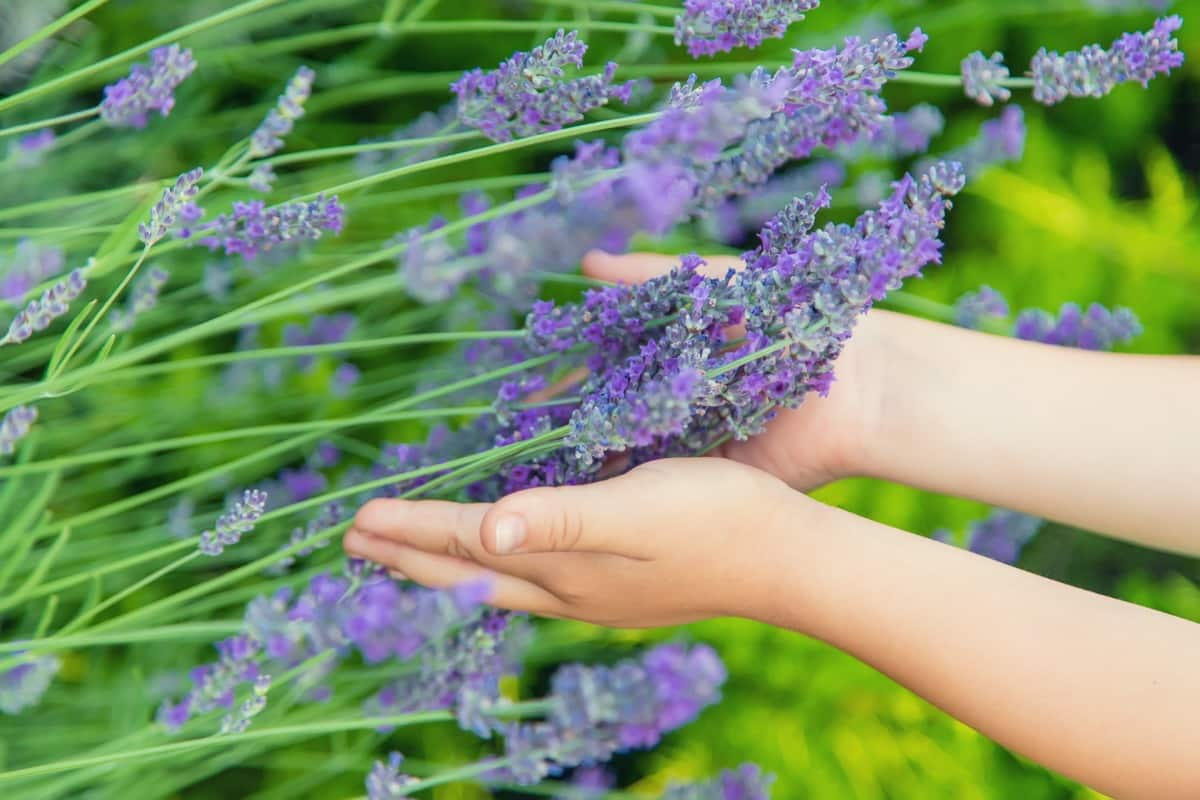
Additionally, Lavender also has a strong scent which will keep them away. Adding Lavender to your garden will help keep ants away, making it an ideal choice for gardeners who want to keep their gardens free of pests. Lavender grows easily from seed, so it is a good choice for beginners. The plant can tolerate dry soil and full sun or partial shade.
Garlic
Garlic is one of the plants that repel ants. It can be planted where ants are a problem and will help keep them away. The best time to plant Garlic is when the ground is moist but not wet, encouraging the cloves to grow. Planting Garlic should be done in layers so it’s covered and protected from frost. Place the bulbs 6-12 inches apart and water sparingly until established.
Garlic can also be grown as an annual or biennial but will produce more cloves if planted in successive years. Garlic is a great plant to add to your garden if you want to deter ants. Garlic has an intense odor that ants find unpleasant, and they are repelled by it. Adding Garlic to your garden will not only help keep ants away but also perfume your garden with its strong scent.
Mint
Mint is an herb that can be used to repel ants. Mint is a perennial plant that can grow up to one foot high. The leaves are oval and have a serrated edge. The flowers are small and green, and the Mints go through a seedling phase where they are subterranean before emerging into the light. Harvesting Mint fresh is best, but you can also dry it later. To make a paste of Mint, mix one tablespoon of chopped fresh Mint with 1/2 cup vinegar or lemon juice. Apply the mixture to your ant problem areas and leave it there for several hours or overnight.
In case you missed it: 18 Common Mint Plant Problems: How to Fix Them, Solutions, and Treatment
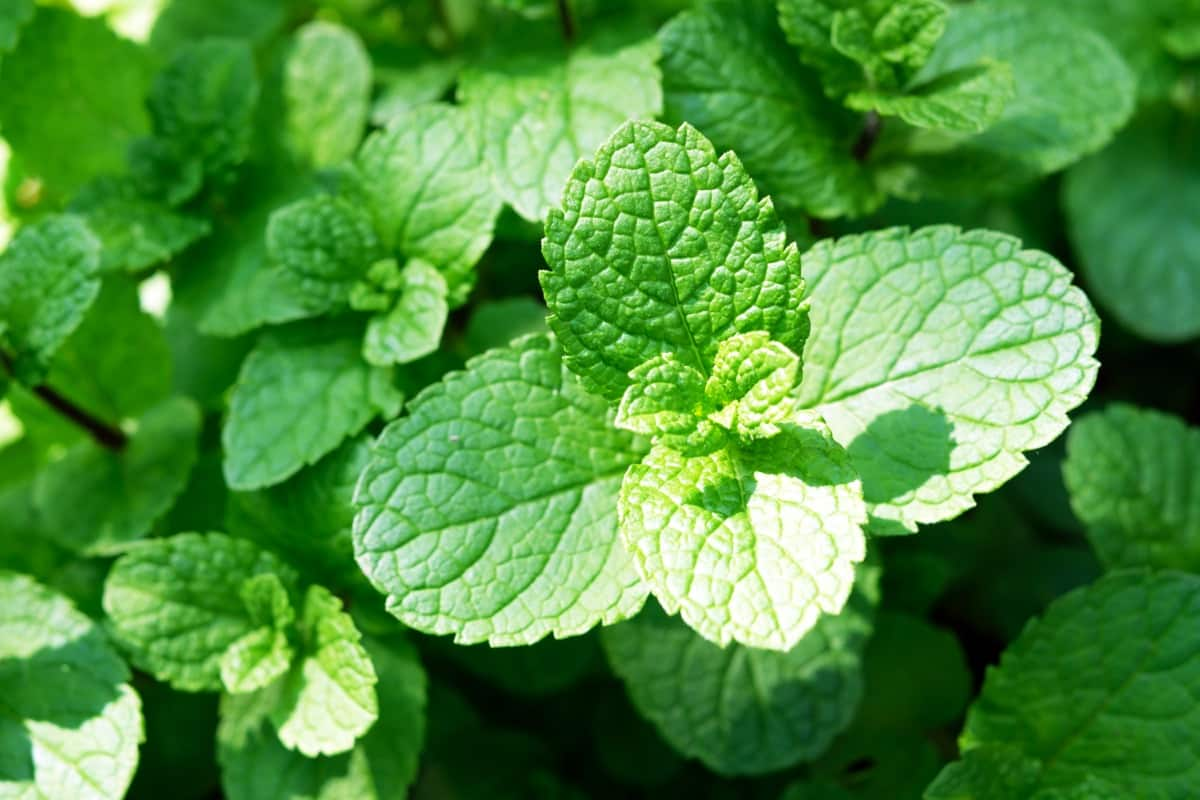
Although Mint plants can be part of an ant-repellent garden, it’s important to choose the right one for your location. For example, Mint grown in warmer climates is more likely to be effective at repelling ants, while Mint grown in colder climates will not work. To add Mint to your ant-repellent garden, start by collecting some of the seeds from mature plants.
You can sow the seeds directly into the ground or place them in pots and then transplant them into the ground when they are ready. Once you have collected some Mint seeds, you need to start growing the plants. To grow Mint annually, remove the flowering stems before harvest. When spring arrives, new growth will emerge, and your Mint plants will be ready for use in your ant-repellent garden.
Yarrow
Many plants can help repel ants in your garden, and Yarrow is one of the best. Yarrow is also easy to grow and requires little maintenance. The plant contains chalcone glycosides that can repel ants from attacking crops or gardens. Yarrow can also be used to make tea or as a natural pesticide. It can grow up to 1 foot tall with broad leaves divided into ovate leaflets. The flowers are yellow-green and have five petals drooping toward the ground.
In case you missed it: How to Build a Garden Room: Step-by-Step Guide, on a Budget, Cheapest Ways, DIY Style
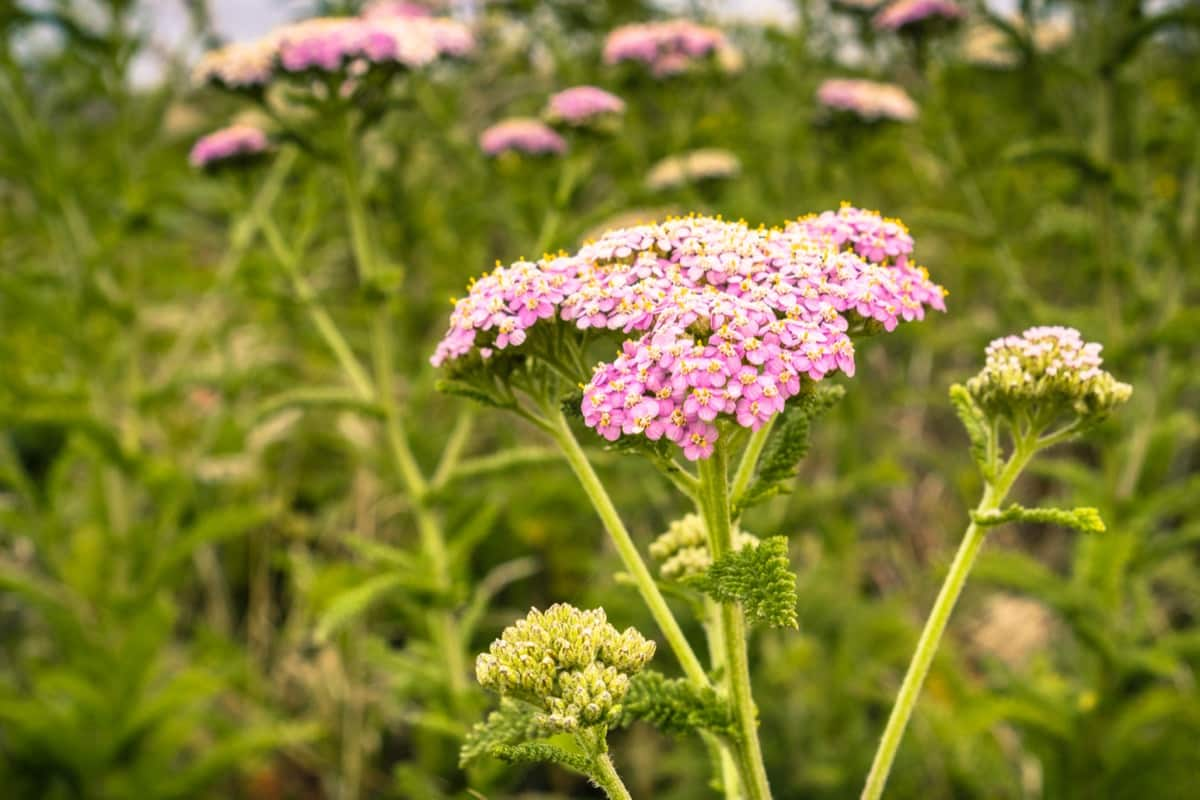
Wormwood
Wormwood is a plant that repels ants. It can be found in cold and warm climates and grows 1 foot tall. Wormwood has small leaves and clusters of yellow flowers. Wormwood is a great plant to include in your garden if you want to repel ants. This hardy, low-growing herb produces small, aromatic flowers that emit a strong odor that ants hate.
Wormwood grows best in full sun and can be grown from seed or purchased as a plant. Wormwood is a plant that has been used for centuries to repel ants. Wormwood can be grown in most climates but is best suited to areas with cool winters.
Pennyroyal
Pennyroyal is a low-growing perennial herbaceous plant with small, bright blue flowers that give it its common name. Pennyroyal is an effective deterrent against ants and other insects and is often used to repel these pests from gardens and other areas where they may be a nuisance.
One of the main reasons Pennyroyal is such an effective ant repellent is because of its volatile oils. These oils contain toxic compounds to many types of insects, including ants. The scent of Pennyroyal also makes it unattractive to these pests, helping to keep them away from areas where they may cause damage.
Lemongrass
Lemongrass is a fragrant herb that grows in warm climates. The scent of Lemongrass distracts ants, which keeps them away from your plants. You can grow Lemongrass in a garden or container. Lemongrass is an easy-to-grow annual that can help keep ants at bay in your garden.
In case you missed it: How to Grow Lemongrass from Seed: A Detailed Guide for Planting to Harvesting
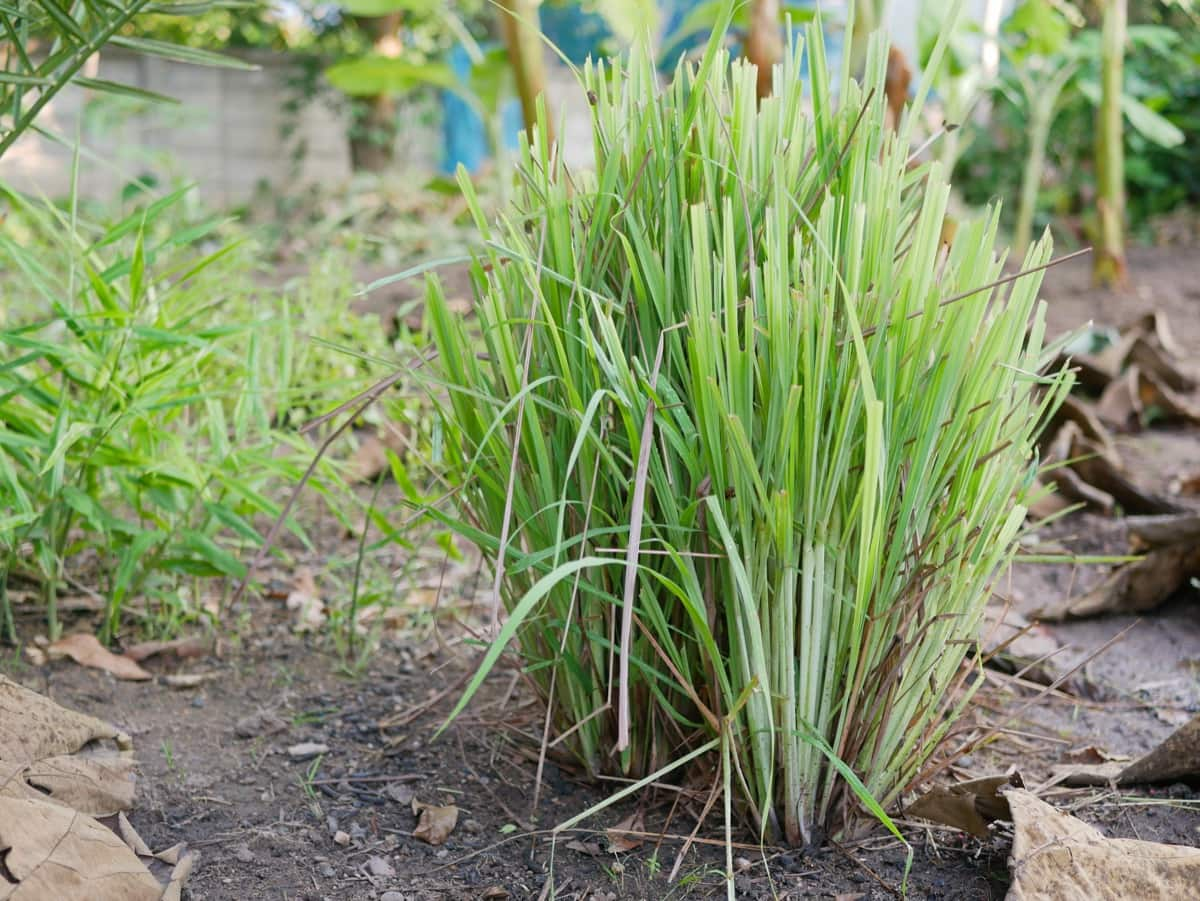
Lemongrass contains zingy compounds that repel ants, and its long, grassy stem makes it an attractive choice for ground cover. Plant Lemongrass near other plants that the ants may raid, such as Tomatoes or Cucumbers, to increase its effectiveness. Lemongrass leaves are oppositely arranged along the stem, have serrated edges, and are about 2 inches long.
Turmeric
Turmeric is a plant that many people use to repel ants. This plant has a strong odor that is meant to deter the ants. Some people also use Turmeric to treat wounds or bruises. Turmeric may be a good option if you are looking for plants that will repel ants. The colorful spice is made from the ground root of the Turmeric plant. Ants cannot stand the smell or taste of Turmeric and will avoid areas where it is used.
To use Turmeric as a deterrent against ants, you first need to gather supplies. You will need ground Turmeric, water, and a spray bottle. The ground Turmeric should be mixed with enough water to form a liquid. Once the mixture is ready, you will need to spray it around where you want the ants to stay away. The ant-repellent properties of ground Turmeric will work best if it’s sprayed in an area frequented by the ants, such as near their nests or food sources.
Sage
Many plants repel ants and other bugs. These plants can be found in most gardens and provide natural pest control. These plants repel insects and have other benefits, such as providing fragrance, deterring weeds, and attracting beneficial insects to your garden. Sage is a perennial shrub that has long, flat leaves and clusters of small, fragrant flowers. The leaves are aromatic and deter ants from attacking the plant. Sage grows best in areas that receive full sunlight.
In case you missed it: How to Grow Sage from Seed to Harvest: Planting and Care
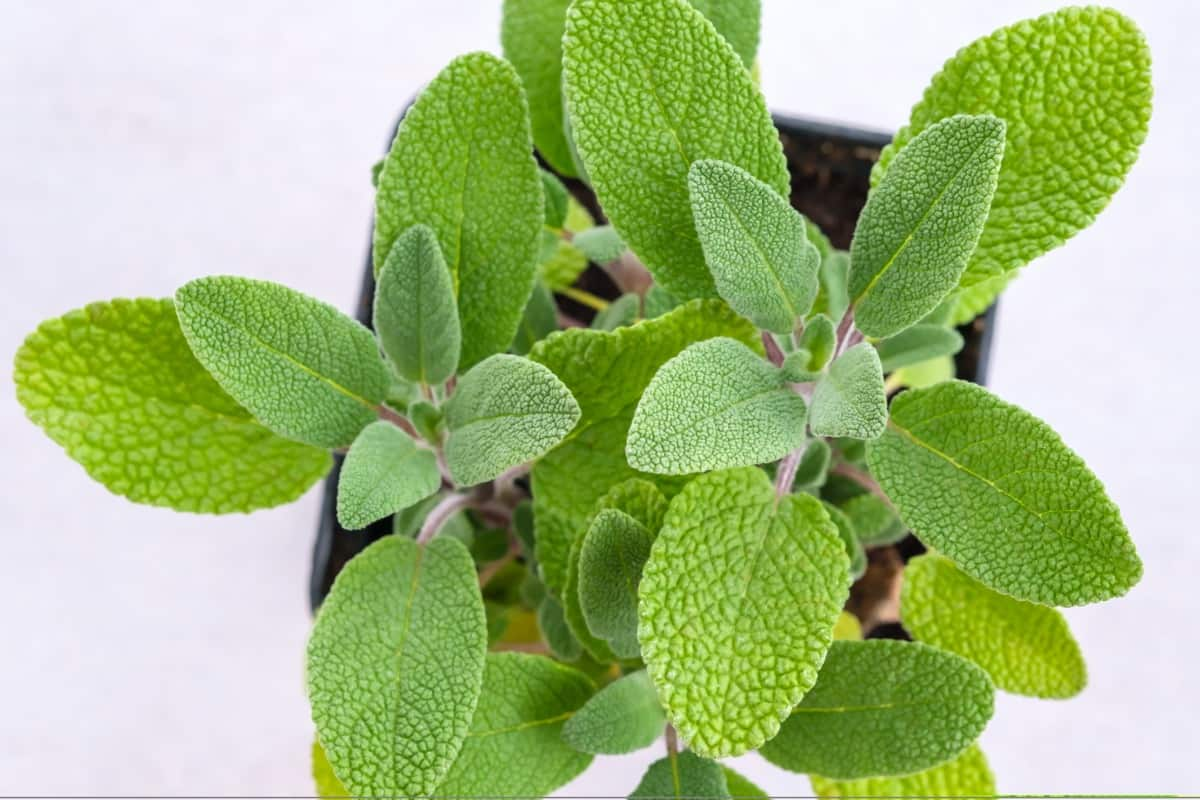
Sage is a common garden plant that can help keep ants away. It grows best in full sun but can tolerate some shade. Heavily pruned plants make better Sage, as they will not provide as much nectar and pollen to the ants. Although Sage is an annual, it may do well in a container or pot in your garden during the winter. In addition, planting Sage near fruit trees will protect them from ant damage.
Conclusion
If you have an ant problem, adding plants in your garden that repel them may help. Whether you live in an area where ants are a problem or want to add some plants to your garden that will help keep them away, plenty of plants can be helpful. All these plants have scent molecules that ants dislike, making them less likely to visit your garden.
- Flower Garden Designs and Layouts for Beginners
- Planting and Spacing Techniques in Papaya: A Beginner’s Guide
- Growing Gold: Essential Techniques for Planting Pineapples
- How to Make Kalanchoe Plant Bushy: Home Remedies and Solutions
- 11 Reasons Why Your Gardenia is Not Blooming: Home Remedies and Solutions
- Eco Elegance: The Guide to Designing a Drought-Tolerant Landscape
- Gardening on a Slope: Strategies for Hillside Landscaping
- Nourish and Flourish: Top Organic Mulches for Thriving House Plants
- Everything You Want to Know about Indian Mogra Flower: Discover Uses and Growing
- Green Thumb Success: Expert Tips for Cultivating Greenhouse Pumpkins All Year Round
- Maximize Growth & Flavor: The Ultimate Guide to Companion Planting in Herb Gardens
- How to Control Rhododendron Problems Naturally: Home Remedies and Organic Ways to Fix Them
- Natural Magic: The Remarkable Benefits of Cinnamon for Plants
- Best Steps to Revive Dying Tulip with Natural and Organic Treatment
- 10 Reasons Why Your Angel Trumpet is Not Blooming: Remedies and Treatment
- How to Fix Periwinkle Leaf and Flower-Related Problems: Natural Remedies and Solutions
- How to Fix Zinnias Leaf and Flower Problems: Discover Natural and Home Remedies
- Organic Steps to Induce Lemon Tree Flowers: A Comprehensive Guide
- Bloom Booster: Crafting the Perfect Homemade Bougainvillea Fertilizer
- Optimizing Growth: A Guide to Applying NPK Fertilizer for Potted Plants
- 10 Best Homemade Fertilizers for Rubber Plant: DIY Recipes and Application Method
- How to Boost Female Pumpkin Flowers: Effective Steps for More Flowers and High Yields
- Transform Your Indoor Garden: Top Benefits of Pink Salt for Houseplants
- 10 Best Homemade Fertilizers for Peacock Plants (Calathea): Easy DIY Guide
- Unlock Blooms: 9 Reasons Why Your Potted Chrysanthemum is Not Blooming
- 8 Reasons Why Your Potted Hibiscus is Not Blooming: Fix it with Simple Solutions
- Unlock Blooms: 9 Key Reasons Your Potted Frangipani Won’t Flower
- 10 Reasons Why Is My Ice Plant Not Blooming: Remedies and Treatment
- 10 Reasons Why My Potted Hydrangea Not Blooming: Treatment and Remedies
- 10 Reasons Why is My Wisteria Not Blooming: Remedies and Treatment
- 10 Reasons Why is My Goldfish Plant Not Blooming: Remedies and Treatment
- Maximize Your Space: Ultimate Guide to Balcony Gardening with Grow Bags
- 10 Reasons Why Your Iris is Not Blooming: Remedies and Treatment
- 10 Reasons Why Your Anthurium Plant is Not Blooming: Treatment and Remedies
- 10 Reasons Why Your Aquaponic Plants Are Not Flowering: Remedies and Treatment
- 10 Reasons Why Your Agapanthus is Not Flowering: Remedies and Treatment
Hi, I have a grapefruit tree. It’s grown very tall, I need to cut it back, but don’t know how. She tends to stop growing new foliage in the branches that I cut back. Even the fruit is smaller now. It’s usually between 3 to 4.5kg. plz assist